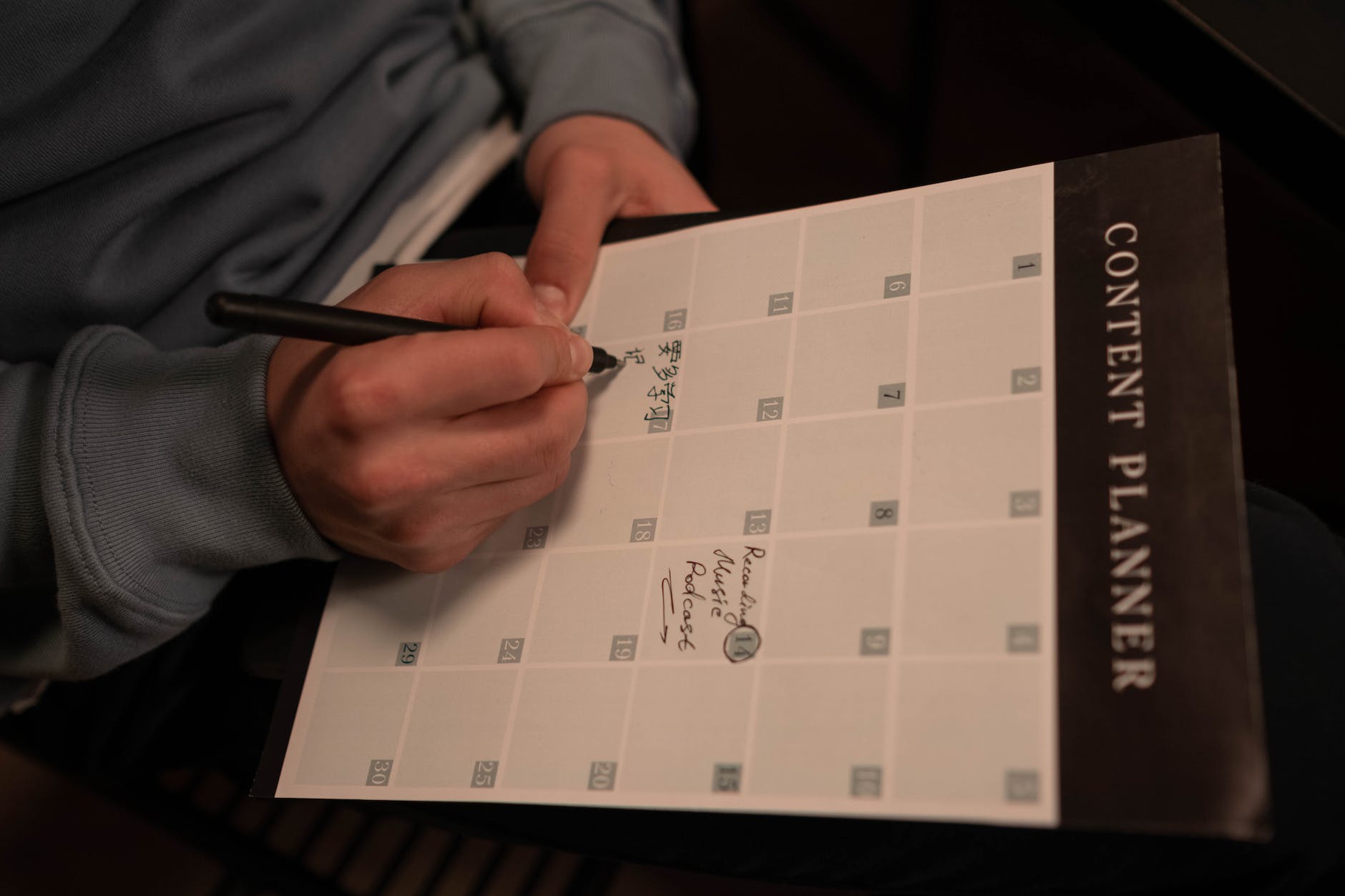Does this sound like you: “Where is that novel idea I had a couple of years ago? I know I wrote it down somewhere. I just can’t find it.” Can you relate? Many writers are chaotic beings sprinkling creativity and inspiration throughout the world. But when you lose your inspiration, your light dims ever so slightly. Stop dimming your light and take action today. Organizing your novel notes is easier than you think. Plus, you’ll never have to wonder where that brilliant idea went again.
Five Easy Ways to Start Organizing Your Novel Notes
The Card Method

The card method is a super simple way to start organizing your novel notes. This is not a project you can accomplish in one day. Try to set aside a weekend. Or plan to spend an hour a day for a week to complete this transformation. You can use any size cards you want.
First, gather all of your novel notes. Put them all into one big pile. Grab your computer and phone if they have notes on them too. Then choose the first note you touch or see. Write every unique idea onto one card. Group similar ideas together. You can also group explanations of an idea you’ve already written with the original idea. Keep going until all of the original and unique ideas have been transferred and all of the secondary information has been set aside.
Keep going through your pile. It may take several more times. Write all similar ideas on the same card. Keep sorting until you have transferred all of your notes to individual cards. Stack your cards up in order and you have a beautifully organized filing system for all of your novel notes.
When you’re ready, you can add more notes to cards you’ve already created, or make new ones. Whenever you create new novel notes, transfer them to your card stacks as soon as you can. Don’t wait, or you’ll have another weekend novel project hanging over your head.
The Bullet Journal Method

InkWell Spills is very fond of the bullet journal method. Learn more about what bullet journals are here. The bullet journal method is useful for any project you want to organize and track. A couple of years ago, I uncovered exactly how useful a bullet journal is for writers. Learn more about that here. For this post, we will simply demonstrate how to organize your novel notes using a bullet journal.
The best part about bullet journals are the collection pages. A collection page is a fancy way of naming a group of pages with a common theme. To start organizing your novel notes with the bullet journal method, you need to know a few things:
- How many novel ideas you have.
- How well-defined each of those novels are.
- The number and type of any other writing project ideas you have (short stories, poems, memoir facts, etc…).
Why do you need to know all of this?
Depending on how much information you have for each novel, it may be wise to invest in more than one notebook. Check out my bullet journal notebook recommendations here. While you’re pondering the vastness that is your abyss of novel notes, let’s dive into how to organize it all (even if you have a hundred well-defined novel ideas).
Always begin with an index and numbered pages so you can locate everything more easily. You might want to set up your bullet journal before you start organizing your novel notes, or you can do both at the same time. For multiple novels, your first collection will be a project tracker. Give each novel a whole page (two if you know there’s a lot of notes you want to add).
Title a page with your novel title (or working title). Then decided how you want to track this novel. Do you want this page to house big picture notes, inspiration, steps to complete, deadlines? The choice is yours. Choose what makes the most sense for your novel project.
Once you have your novel project trackers complete. It’s time to move on to the details. You’re going to break each novel down into pieces. Color coding might be useful if you have a lot of novels to keep track of. This page has a ton of useful ideas to keep your bullet journal more organized. The pieces you choose will again be what works best for you.
Here are some collection page ideas you might want to use to organize your novel:
- Research
- Books to Read
- Helpful Websites
- Plot Notes {a very large collection page span is highly recommended}
- Themes | Moral Arguments
- Sketches
- Cover Art
- Premise | Blurbs
- Setting Information
- World Building Ideas
- Characters (dedicate at least one page per main character)
- Character Arcs (usually requires multiple pages, one for each section of your plot)
- Inciting Incidents
- Story Ideas
- Short Stories & Short Story Notes
- Poetry
- Journal Entries
- Query Records
- Query Letter Ideas
- Publishers and Publications
Once you have all of your collections finished, take out your scattered novel notes. Sort them according to which collection they belong to. Then transfer them into your new, beautiful, highly organized bullet journal.
The Container Method

Organizing your novel notes using the container method is simple but somewhat chaotic. This technique is recommended for writers with lots of notes, particularly on scraps of paper. The idea is pretty simple. Take all of your novel notes and dump them into a pile. See how many you actually have. Then sort your notes into different groups, e.g. novel ideas, short story ideas, and poetry.
Next grab some boxes to categorize and separate your notes. You can get creative with the boxes and decorate them with the novel’s theme, or with inspirational quotes. Make them unique in a way that gets you excited to use your notes.
After you have your notes sorted and your boxes chosen, start placing the notes into each box. If you want this to be a hyper-organized system, you could place smaller boxes or dividers within larger boxes. For example, if you have two major novel ideas with lots of notes for each, use one large box for each novel. Then create sections in the boxes to denote character information, world-building ideas, etc..
The more sections in each box, the easier it will be to organize and find your information. You may want to rewrite notes that are illegible, torn, or otherwise likely to be damaged. When you’re ready to write, now you simply grab your box and get started.
Digital Methods for Organizing Your Novel Notes

There are probably hundreds, if not thousands of digital programs you could use to organize your novel notes. This post will only list a few of the more popular options:
OneNote
Pros – You can create unlimited notebooks with unlimited sections and subsections. You can color coordinate your notes. The program allows you to draw or type and add photos and graphics. Files are easily shared via email. Cloud sync is available.
Cons – You need to purchase Microsoft Office to use this tool. It doesn’t play well with others.
Evernote
Pros – Many features are free. Similar to OneNote in that you can write or type, upload photos, and add graphics. Versatile program that interfaces well on both desktop and mobile devices.
Cons – To get full use of this app, the paid version is the best option.
Project Studio
Pros – You can get hyper-organized with this app. There’s an overview page with all upcoming tasks. It has cloud sync to let you work seamlessly between your phone and desktop. Color coordination makes each project distinct.
Cons – The free version only allows for five projects at a time, which may not be enough. This might not be the best for novel notes as it is more task-oriented than note centric. Although it can certainly be used for this purpose, many writers prefer a functional digital notebook to a project organized.
Novlr
Pros – There’s a 14-day free trial that allows you to fully test out the features and get a feel for the software. Not only can you create note sections with further subsections, but you can actually write your whole novel from chapters to cover art. There are multiple themes to suit your moods. Word count trackers help you measure your consistency and progress. It even has writing resources including an amazing blog called the Reading Room.
Cons – You do have to pay a subscription fee to use this software.
Novelist
Pros – As far as I know, this app is actually free to use. It is a program specifically designed to create a digital outline for your novel. The brief tutorial at the beginning is worth watching so you can easily integrate your notes. There are multiple ways to categorize, organize, and review your notes. You can upload photos and links. Ideal for someone looking for software that is both simple and efficient.
Cons – There’s a small learning curve to fully grasp the interface of this program. There is no desktop version.
The Scrapbook Method

This is a way to beautify something that’s not necessarily beautiful. Instead of taking the time to transcribe or digitally transfer your notes, why not make a scrapbook out of them? You still need to dump your notes into a big pile and sort them into categories. But then you can create an inspiring scrapbook with your notes. Include sketches and watercolors to add emphasis to specific elements. You can glue in some pictures for inspiration too.
One large scrapbook might be enough. But if you have a lot of notes for multiple novels, it might be better to use one scrapbook per novel. When you’re finished you will have transformed something plain and ordinary into something creative, unique, and inspiring.
What process do you use for organizing your novel notes? Have you used any of these methods? Do you think you might start? Let me know in the comments! Best of luck on your writing journey and may these ideas bring some peace into the chaos that is your writer’s life.

Note: This page may contain affiliate links for which, if an item is purchased, I will receive a small commission at absolutely no extra cost to you. I only ever post links for products that I have used, found helpful, and loved. Thank you for supporting my writing journey so I can continue to help you on yours!



